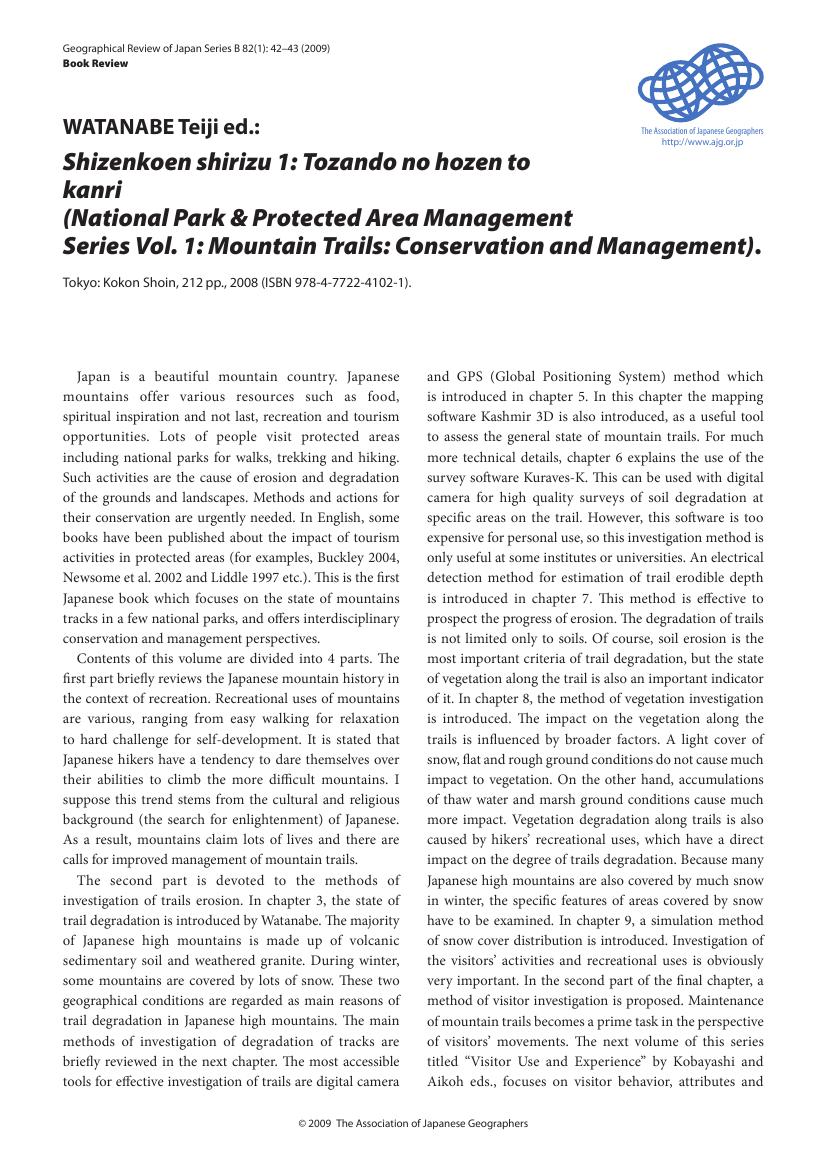1 0 0 0 OA Japanese Tourism Geography in the 2000s: Researchers, Textbooks and Academic Papers in Japan
- 著者
- ARIMA Takayuki
- 出版者
- The Association of Japanese Geographers
- 雑誌
- Geographical review of Japan series B (ISSN:18834396)
- 巻号頁・発行日
- vol.86, no.2, pp.120-131, 2014-03-25 (Released:2014-03-27)
- 参考文献数
- 23
This article attempts to examine the changes in Japanese tourism geography in the 2000s, clarifying the results of its researchers, textbooks and academic papers, and consider future visions. The most notable development in the changing demographics of the researchers is a drop in the average age. Young researchers who are mainly university students have had the chance to learn tourism geography as a first discipline at their universities. However, judging by the evidence from textbooks, tourism geography in Japan only began to be admitted as an academic discipline in this decade and a statement of definition of tourism geography is going to be more related to ‘space’ mind rather than ‘region’ mind. On the other hand, however, none of the textbooks have introduced a common theory or models of tourism space. As regards academic papers in the 2000s, peer-reviewed papers tend to be in major geographical journals in Japan, but a higher number of papers are published in bulletins. This situation may arise from the fact that tourism geography is based mostly on regional studies. Also the methodology of Japanese tourism geography is not as advanced compared with the rest of the world, and more scientific methodology is needed in the research such as statistical method, qualitative survey methods, GIS or collaborative methods with the physical sciences.
- 著者
- ARIMA Takayuki
- 出版者
- The Association of Japanese Geographers
- 雑誌
- Geographical review of Japan series B (ISSN:18834396)
- 巻号頁・発行日
- vol.82, no.1, pp.42-43, 2009-08-30 (Released:2009-10-07)
- 参考文献数
- 3
